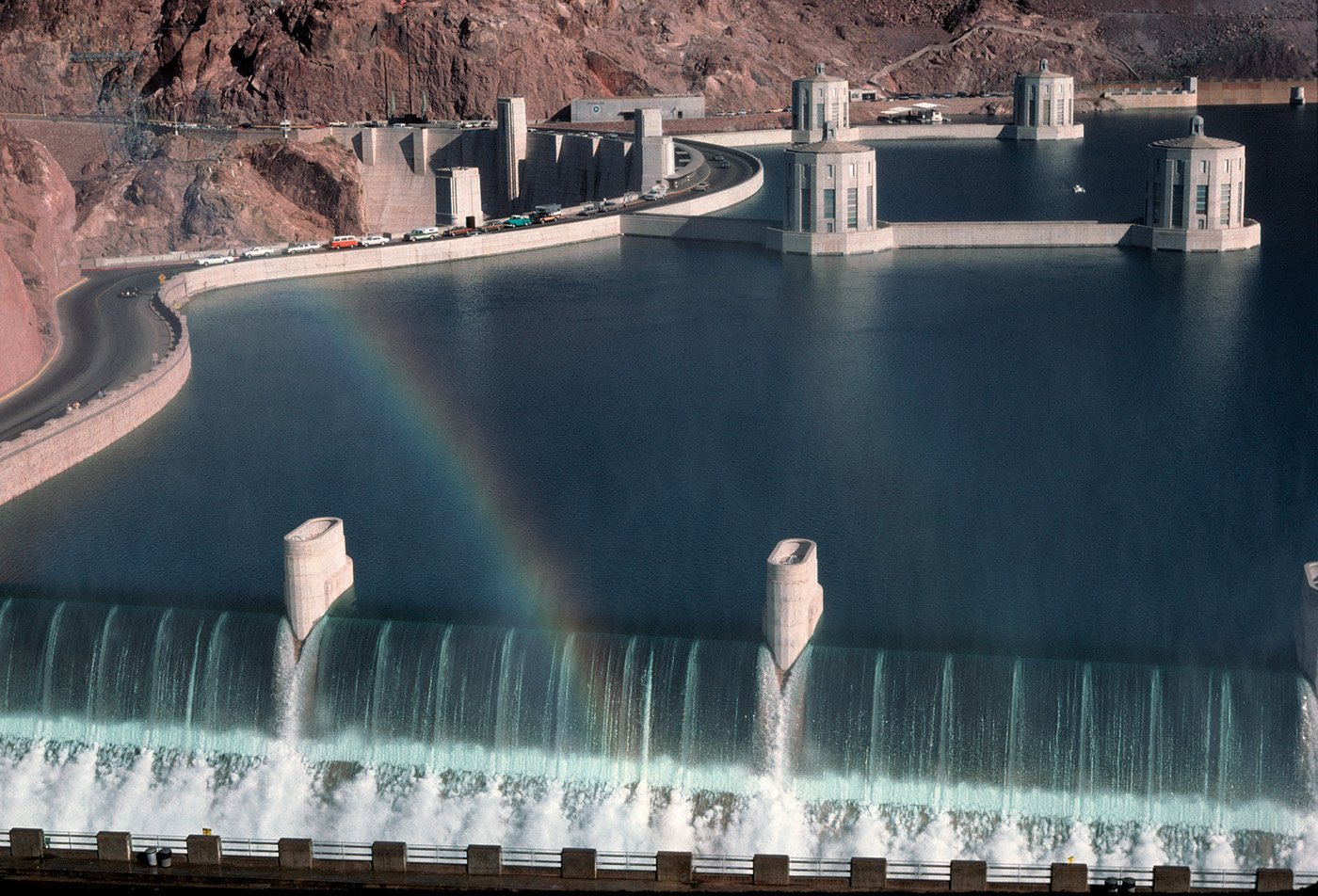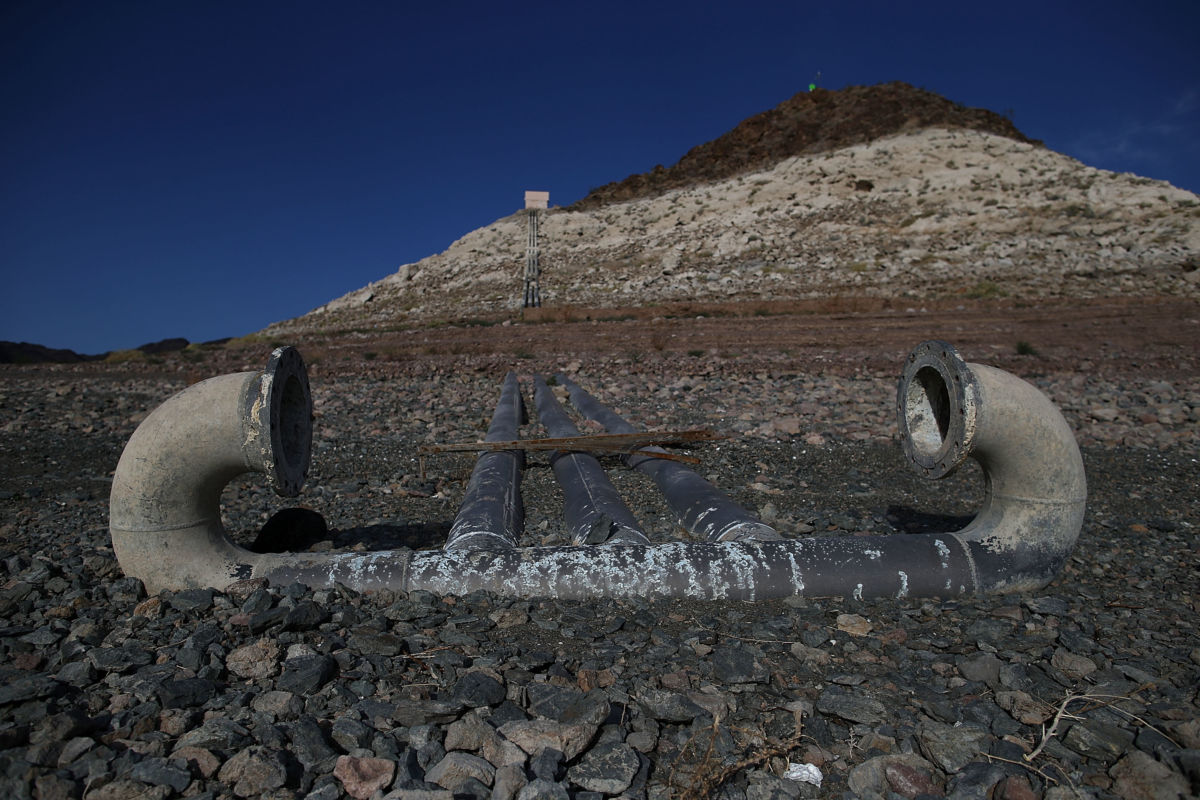Support justice-driven, accurate and transparent news — make a quick donation to Truthout today!
In southern Nevada, the problem is drought. Nineteen years of declining snowpack in the mountains that make up the Colorado River water basin has caused Lake Mead, the region’s primary source of drinking water, to drop about 130 feet.
In New York City, it’s floods — extreme storms that overwhelm the drainage system and dump water into the streets and subways.
Tampa Bay must contend with rising sea levels. And in Denver, the city’s water utility — which serves more than 1.4 million people — must be ready for all kinds of scenarios, including a repeat of 2002’s historically low snowpack levels, or a deluge that could cause flash flooding.
These regions must plan for different water problems, all affected by a warming planet. On top of that, in some places, local leaders have had to contend with a skeptical public that doesn’t believe climate change is happening.
“There is no single road map” to planning for climate change, said Julia Rockwell, the manager for the Philadelphia Water Department’s 5-year-old Climate Change Adaptation Program.
In 2007, the nation’s largest water utilities formed an alliance to begin planning for that uncertain future. The Water Utility Climate Alliance partnership knits together 12 utilities that deliver fresh drinking water to 50 million water consumers — from Seattle to San Diego, New York City to Tampa Bay. Alliance engineers and managers swap information, figuring out how to manage water in an increasingly uncertain climate.
“We need to be prepared for a range of possible future conditions,” said Denver Water climate scientist Laurna Kaatz, who has chaired the alliance for the last four years. “We need to embrace uncertainty.”
The alliance equips people with tools, knowledge, and skills, and demonstrates “how climate change is going to require that we think about how we do our jobs differently,” said Heidi Roop, a research scientist for the University of Washington’s Climate Impacts Group.
The UW group has worked with the alliance to train people in the water industry. “We are helping the water sector address and overcome institutional barriers for change and helping create peer networks,” Roop said.
Kaatz, a former physics professor, said she got tired of going to conferences and hearing presenters say, “This is the way climate change is going to happen in the future.” No one knows precisely what the climate is going to be like in the future, and using a climate model to make predictions decades from now is “bad use of the science,” she said.
“We don’t have predictive science, we have informative science. So we need to be smart in our use and application of climate science.”
An Inherently Local Issue
Internationally, the World Resources Institute says 17 countries — home to one-quarter of the Earth’s population — are using their water resources too fast. Extreme water shortages have happened in Chennai, India and Cape Town, South Africa. Water is an inherently local issue, and the poorest communities are often the most vulnerable.
Even the U.S., which is not on the list of the World Resources Institute’s most-stressed countries, has places where water is being used faster than it can be replenished, the institute report says. California, Colorado, Nebraska, and Arizona are among those “high-stress” states: About 40 to 80 percent of available water is withdrawn every year to supply irrigated agriculture, municipalities and industries. The most-stressed state is New Mexico, where more than 80 percent of its available water supply is withdrawn annually.
And you can’t let the taps run dry. “Failure is not an option,” Kaatz said.
The future is especially unclear in Colorado. It’s far from the oceans and divided by topography — craggy alpine mountains in the west, high plains and desert plateaus in the east. Its historic weather patterns have been complex and highly variable.
The same could be said of its politics: blue in some areas, red in others. When the Denver utility created its climate adaptation program in 2008, it aimed to set aside politics and make one thing clear: That Colorado is warming, the natural system is changing, and that the region must prepare for a hotter world.
The Rocky Mountain snowpack is one ongoing sign of climate change. Denver relies on snowpack to fill its reservoirs. But during the spring, the snowpack doesn’t refreeze at night the way it used to, Kaatz said. That causes the snow to start melting sooner and over a longer time period. Some of the water is lost to plants, soil, and evaporation, and less river runoff is left to fill the reservoirs.
Paradoxically, Colorado also has to plan for flash floods that could overwhelm its drainage systems. “What does it mean if we have more intense and frequent extreme precipitation events?” Kaatz asked. “What if our heat waves last two weeks, instead of 10 days? Our first step is to plan for multiple, diverse and flexible solutions, and the second is to plan for increasing extremes.”
Philadelphia’s Rockwell says there’s an ongoing need for “actionable science.” Here’s an example: Philadelphia knows it can expect more rainfall in the future, and the storms will be more extreme. Global climate models do a good job of reporting multiyear and seasonal averages, she said. But engineers need much higher-resolution data to help them figure out what a really intense, short rainfall event would do to the city’s drainage system.
That’s a problem faced by engineers around the country, and the alliance can’t solve that uncertainty. But it helps when they can talk to one another about how they’re solving the problems.
Just up the coast, New York City must deal with bigger storms as well as sea level rise. The city has been using climate resilience design guidelines for more than a decade now, said Alan Cohn, managing director for integrated water management for New York City’s Department of Environmental Protection.
Still, “as much as we’ve made leaps and bounds since 2004, in terms of more detailed climate projections, there’s still a lot of gaps and uncertainties,” he said.
Climate Change Is “Very Real”
In some parts of the country, few people doubt that climate change is happening and that humans caused it. But in other places, skepticism about the causes of droughts and floods can make this a tougher conversation.
Two decades ago, it would have been a hard sell for Nevada water officials to tell its customers to conserve water because of climate change, Southern Nevada Water Authority spokesman Bronson Mack said. But the water utility didn’t need to.


Since the early 2000s, a drought has caused Lake Mead — the source of most of southern Nevada’s drinking water — to drop by more than 100 feet. The lake level is now about 1,083 feet above sea level, creating a so-called “bathtub ring” around the lakeshore. So the utility focused on the issue that was visibly at hand: the plummeting lake water levels.
This allowed the utility to gain support for a new, $817 million water intake, which is positioned at about 1,000 feet — ensuring that if the lake level drops further, the utility can still bring water to its customers. It also built a $650 million low-lake-level pumping station, which provides access to cooler, higher-quality water deeper in the lake.
Fast-forward to 2019. As more people nationwide have become aware of the implications of warming temperatures and volatile weather, the utility has been able to speak with more confidence about the tie-in between this drought — likely caused by higher temperatures and below-average precipitation — and long-term climate science. “Our messaging has evolved,” Mack said. “There’s more understanding of climate change as a term, and what it means.”
New Yorkers, on the other hand, aren’t quibbling over the science. Ever since 2012, when Superstorm Sandy caused $68 billion in damage and caused 147 fatalities in the U.S. alone, there’s little pushback about the existence or the causes of climate change, Cohn said. “The community has really recognized that climate change wasn’t this far-off thing — it’s very real.”
A similar conversion happened in the Colorado drought of 2002, which resulted in the lowest snowpack in recorded history. Although it’s not clear whether global warming contributed to that year’s low snowpack, it has helped people visualize what the climate might look like down the road.
“I think people need an event to happen for it to become real for them,” Kaatz said. “We focus on that story… You want people to remember that we have experienced this.”
Kaatz grew up outside of Denver, and was a professor of physics at Sweet Briar College in Virginia before returning home to work as a climate science researcher. A downhill skier, she knows that a poor snowpack means the season starts later, ends sooner or both.
She says she loves doing applied science and helping her community prepare for the changes, but there’s a bittersweet side to the work.
“The species and ecosystem losses we will see will be devastating,” she said. “Climate change is very personal.”
Media that fights fascism
Truthout is funded almost entirely by readers — that’s why we can speak truth to power and cut against the mainstream narrative. But independent journalists at Truthout face mounting political repression under Trump.
We rely on your support to survive McCarthyist censorship. Please make a tax-deductible one-time or monthly donation.
